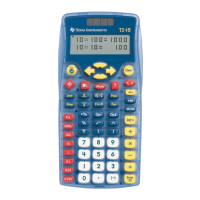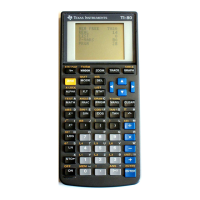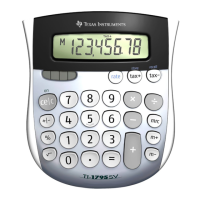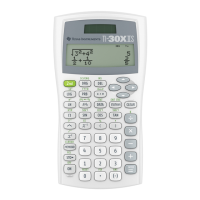s[n]→s0 © Save the individual sums we need
s[n-1]→s1
s[n-2]→s2
s[n-3]→s3
s0-(s0-s1)^2/(s0-2*s1+s2)→sb © Find the last sum
s1-(s1-s2)^2/(s1-2*s2+s3)→ sa © Find the next-to-last sum
return {sb,sb-sa} © Return the last sum, and the difference
EndFunc
aitkend2() is called with a list of series terms, and returns the last accelerated sum, and the difference
between the last two sums. The difference is useful to get an idea of the convergence; if it is large
compared to the sum, then convergence is poor. Try using more terms.
A much-used example for Aitken's method is this series, and I'll use it, too:
✜
4
=
✟
k=0
∞
(
−1
)
k
2$k+1
= 1 −
1
3
+
1
5
−
1
7
+ ...
To create an input series of 11 terms for aitkend2(), use
seq((-1)^k/(2*k+1),k,0,10)→s1
then
aitkend2(s1)
returns {0.7854599, 0.0001462}.
which results in an absolute error, compared to pi, of 0.000247. In comparison, the final difference of
the original 11 terms is about 0.1, and the absolute error is also about 0.1. With the same 11 terms,
Aitken's method improves the final result by nearly three orders of magnitude.
No convergence acceleration works well if the series terms are increasing. In this case, find the point
at which the terms begin decreasing, sum the increasing terms, then apply the acceleration to the
remaining terms.
References:
[1] Convergence acceleration of series, Xavier Gourdon and Pascal Sebah, 2002
http://numbers.computation.free.fr/Constants/Miscellaneous/seriesacceleration.html
A concise, thorough survey of convergence methods, starting with a good basic introduction. Covers
seven different acceleration methods, including the (popular) Euler's method for series with alternating
signs, and an interesting method based on the zeta function. Highly recommended.
[2] Numerical Methods for Scientists and Engineers, Richard W. Hamming, Dover, 1973.
A short but typically pithy description of Aitken's method, which Hamming oddly calls Shanks' method.
[3] Numerical Recipes in Fortran, 2nd edition, William H. Press et al, Cambridge University Press,
1992. http://www.nr.com/
Section 5.1 is aptly titled Series and Their Convergence, and Press and his cohorts first mention
Aitken's method, but then provide code for Euler's method.
6 - 113
